
Enchanting Dingle Peninsula: Ireland's Coastal Gem
Discover the rugged beauty and rich cultural heritage of Ireland's Dingle Peninsula, where stunning landscapes, friendly locals, and ancient history await.
The Dingle Peninsula, located on the southwest coast of Ireland, offers a unique blend of natural beauty, rich history, and vibrant culture. Stretching into the Atlantic Ocean, this picturesque peninsula is known for its rugged cliffs, sandy beaches, and scenic drives. Visitors can enjoy stunning views of the coastline, with the Blasket Islands visible in the distance on clear days. Dingle Town, the heart of the peninsula, is a charming fishing village filled with colorful shops, cozy pubs, and friendly locals. Traditional Irish music fills the air in many of the pubs, offering an authentic cultural experience. The town is also home to the famous Dingle Distillery, where visitors can learn about the craft of whiskey, gin, and vodka production. The peninsula is rich in history, with numerous archaeological sites dating back to the Stone Age. Be sure to visit the Gallarus Oratory, a well-preserved early Christian church, and the ancient beehive huts scattered across the landscape. Outdoor enthusiasts will find plenty of activities to enjoy, from hiking and cycling to sailing and surfing. The Slea Head Drive, a circular route around the westernmost part of the peninsula, offers some of the most breathtaking views in Ireland.
Local tips in Dingle Peninsula
- The weather can change quickly, so pack layers and waterproof clothing.
- Visit in the off-season for fewer crowds and a more relaxed experience.
- Rent a car to explore the peninsula at your own pace.
- Stop at local shops and markets to try fresh seafood and artisan products.
- Learn a few Irish phrases to connect with the locals more easily.
Enchanting Dingle Peninsula: Ireland's Coastal Gem
The Dingle Peninsula, located on the southwest coast of Ireland, offers a unique blend of natural beauty, rich history, and vibrant culture. Stretching into the Atlantic Ocean, this picturesque peninsula is known for its rugged cliffs, sandy beaches, and scenic drives. Visitors can enjoy stunning views of the coastline, with the Blasket Islands visible in the distance on clear days. Dingle Town, the heart of the peninsula, is a charming fishing village filled with colorful shops, cozy pubs, and friendly locals. Traditional Irish music fills the air in many of the pubs, offering an authentic cultural experience. The town is also home to the famous Dingle Distillery, where visitors can learn about the craft of whiskey, gin, and vodka production. The peninsula is rich in history, with numerous archaeological sites dating back to the Stone Age. Be sure to visit the Gallarus Oratory, a well-preserved early Christian church, and the ancient beehive huts scattered across the landscape. Outdoor enthusiasts will find plenty of activities to enjoy, from hiking and cycling to sailing and surfing. The Slea Head Drive, a circular route around the westernmost part of the peninsula, offers some of the most breathtaking views in Ireland.
When is the best time to go to Dingle Peninsula?
Iconic landmarks you can’t miss
Dingle Oceanworld Aquarium
Discover the vibrant marine life at Dingle Oceanworld Aquarium, Ireland's largest aquarium, nestled in the stunning Dingle Peninsula.
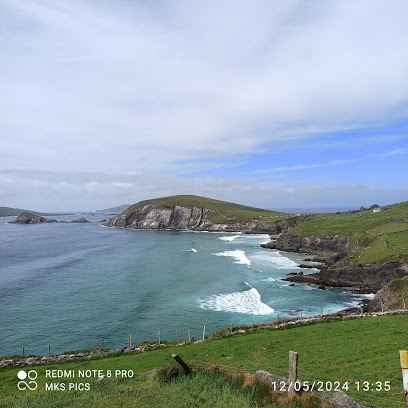
Coumeenoole Beach
Experience the stunning cliffs and serene sands of Coumeenoole Beach, a hidden gem on the Wild Atlantic Way in County Kerry, Ireland.
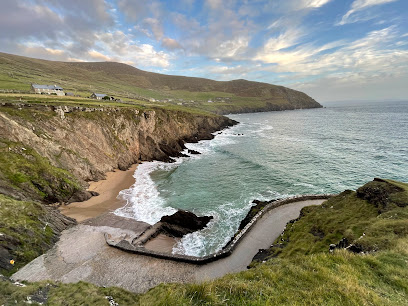
Fairy Fort Ringfort
Explore the enchanting Fairy Fort Ringfort in Dingle, a fascinating archaeological site steeped in history and local folklore amidst breathtaking landscapes.
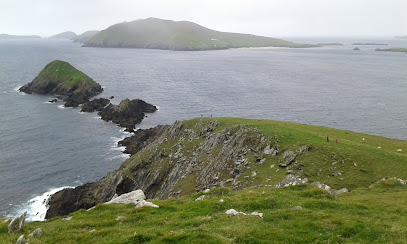
Cill Maoilchéadair
Discover the historical charm of Cill Maoilchéadair, a 13th-century landmark in the Dingle Peninsula, steeped in rich Irish heritage and breathtaking scenery.
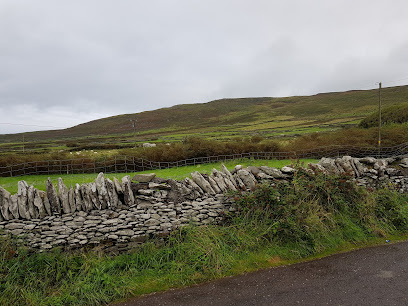
Cashel Murphy
Experience the breathtaking views and rich history at Cashel Murphy, a stunning landmark along the scenic Slea Head Drive in County Kerry.
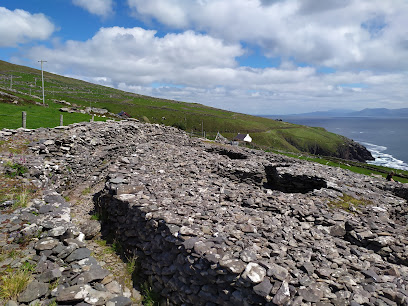
Hussey's Folly
Explore Hussey's Folly, a historical landmark in County Kerry offering stunning views and a rich tapestry of Ireland's architectural heritage.
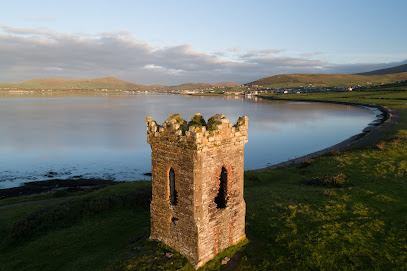
Dingle Lighthouse (Teach Solais an Daingin)
Discover the stunning Dingle Lighthouse, a historical landmark in County Kerry, offering breathtaking views and a glimpse into maritime heritage.
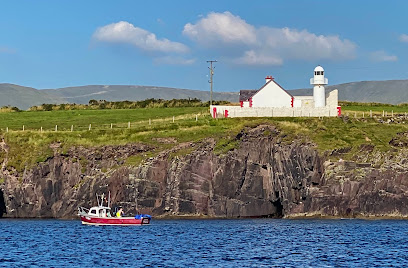
Fungie - The Dingle Dolphin
Discover the magic of Fungie, the Dingle Dolphin, and explore the stunning Dingle Peninsula's coastal beauty and vibrant marine life.
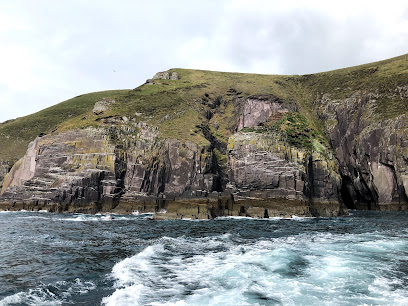
An Diseart
Discover the heart of Irish culture at An Diseart, a captivating cultural center in Dingle, County Kerry, offering art, education, and breathtaking scenery.
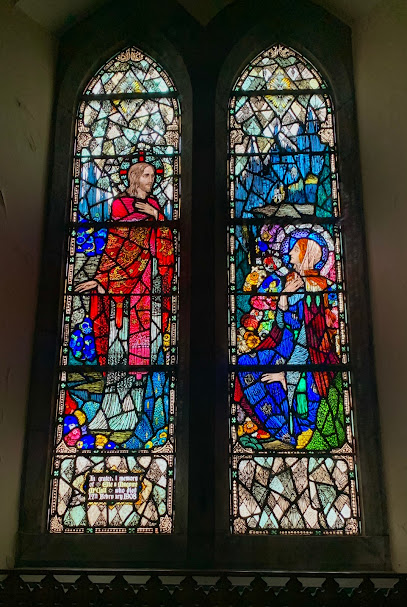
Dingle Marina Breakwater
Experience the stunning coastal beauty and serene atmosphere of Dingle Marina Breakwater, a perfect spot for relaxation and marine adventures in County Kerry.
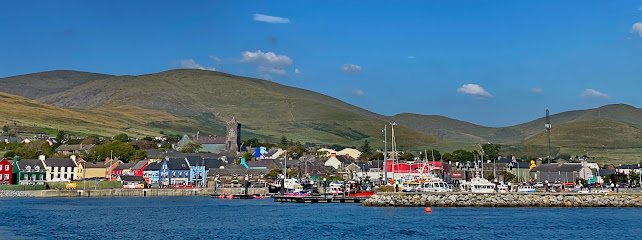
Dingle Bay Kerry
Experience the breathtaking beauty and rich history of Dingle Bay, a stunning landmark in County Kerry, Ireland, perfect for travelers and nature lovers alike.
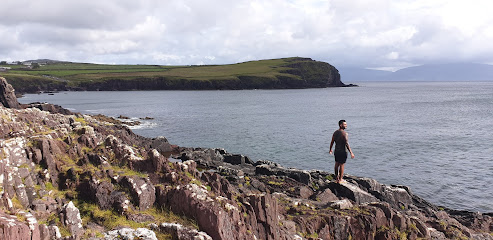
Dingle peninsula
Explore the Dingle Peninsula, a stunning Irish gem known for its breathtaking landscapes, rich culture, and vibrant local life, perfect for any traveler.
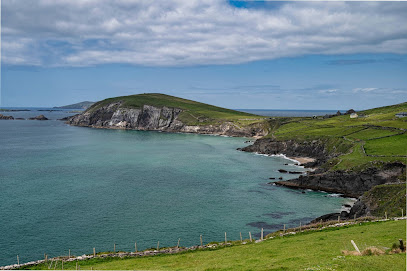
Dingle kerry
Discover the enchanting town of Dingle, County Kerry, where stunning coastlines meet vibrant culture and rich Irish heritage awaits.
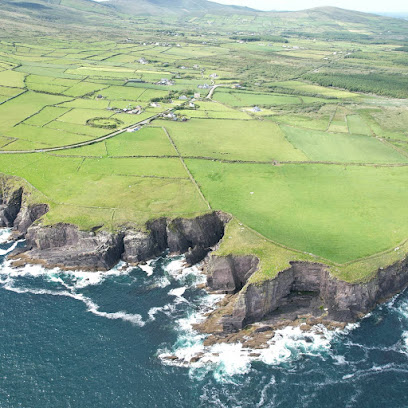
Unmissable attractions to see
Gallarus Oratory Visitor Centre
Explore the ancient Gallarus Oratory, a stunning stone structure on the Dingle Peninsula, rich in history and surrounded by breathtaking landscapes.
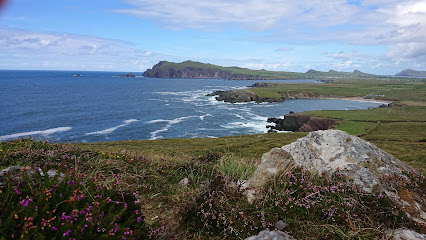
Glanteenassig Forest Park
Experience the breathtaking landscapes and tranquil beauty of Glanteenassig Forest Park in Co. Kerry, a hidden gem for nature lovers and outdoor enthusiasts.
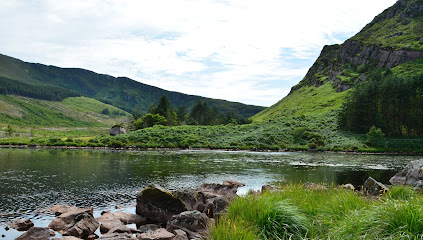
Ceann Sibéal Golf Club
Discover the breathtaking beauty of Ceann Sibéal Golf Club on the Dingle Peninsula, where stunning views meet a challenging golf experience.
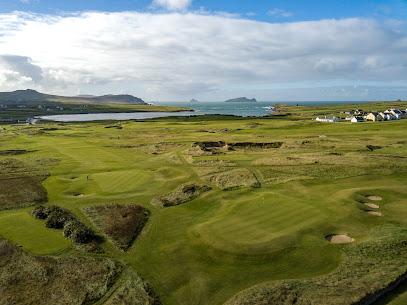
Killarney Racecourse & Ross Golf Course
Discover the excitement of horse racing and the serenity of golf at Killarney Racecourse & Ross Golf Course in the heart of County Kerry, Ireland.
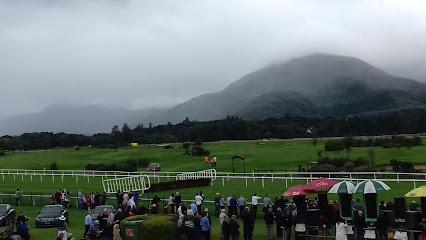
Annascaul lake
Discover the serene beauty of Annascaul Lake in County Kerry, Ireland - a perfect spot for relaxation, nature walks, and stunning views.
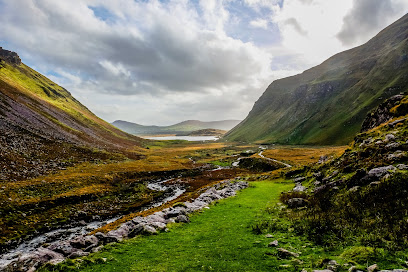
Killarney Races
Visit Killarney Races for an unforgettable day of thrilling horse racing and stunning scenery in County Kerry, Ireland.
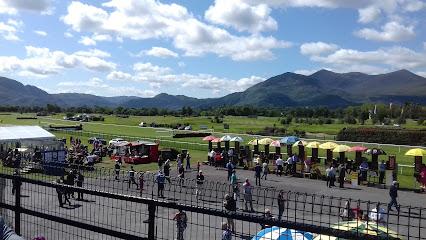
Dingle Sheepdog Demonstrations
Discover the heart of rural Ireland at Dingle Sheepdog Demonstrations, where you can witness the extraordinary skills of sheepdogs in a breathtaking landscape.
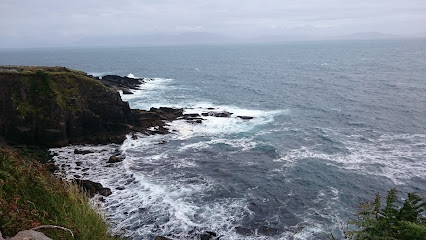
Scenic spot, Mountoven
Experience the stunning landscapes and serene beauty of Mountoven in County Kerry, where the cliffs meet the Atlantic Ocean.
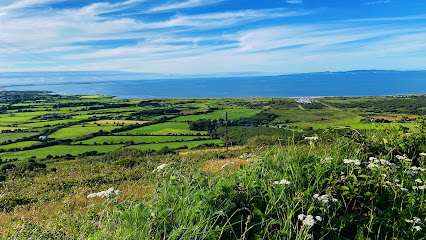
Músaem Chorca Dhuibhne
Explore the cultural heritage of the Dingle Peninsula at Músaem Chorca Dhuibhne, a charming museum in Ballyferriter, County Kerry, Ireland.
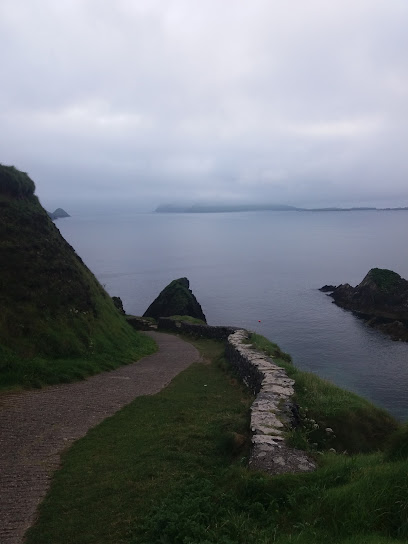
Lios Stone Circle & Animal Feeding
Explore the ancient Lios Stone Circle in Co. Kerry and enjoy delightful animal feeding experiences amid breathtaking landscapes.
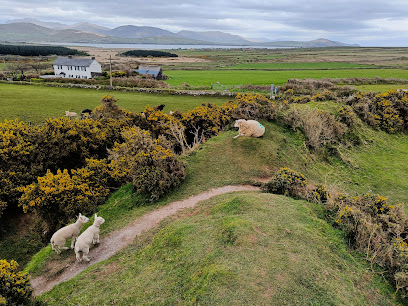
Caherconree Promontory Fort
Explore the ancient Caherconree Promontory Fort in County Kerry, a remarkable historical landmark with breathtaking views and rich Irish heritage.

Gowlane
Experience the breathtaking landscapes and warm hospitality of Gowlane, Co. Kerry - an authentic Irish destination that enchants every traveler.

Tobar Na nGealt
Discover the serene beauty of Tobar Na nGealt, a hidden scenic spot in Co. Kerry, Ireland, perfect for nature lovers and photography enthusiasts.
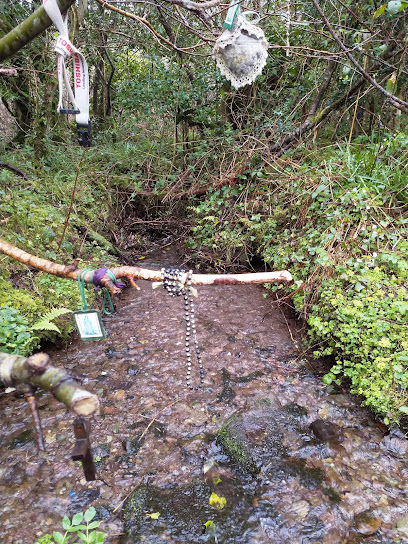
Fairy Land
Explore the enchanting landscapes of Fairy Land, a serene nature preserve in Co. Kerry, perfect for nature lovers and outdoor enthusiasts.
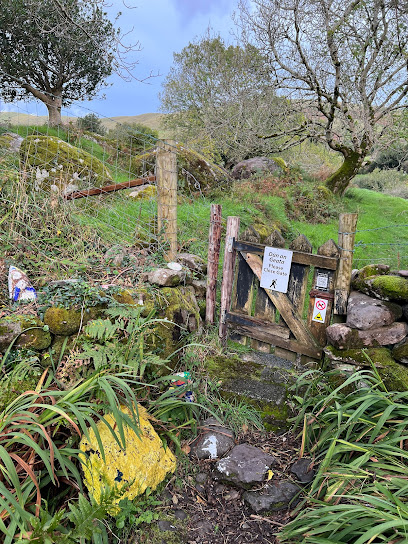
Creek Crossing
Explore the serene beauty of Creek Crossing in Co. Kerry, a perfect blend of nature, adventure, and cultural heritage.
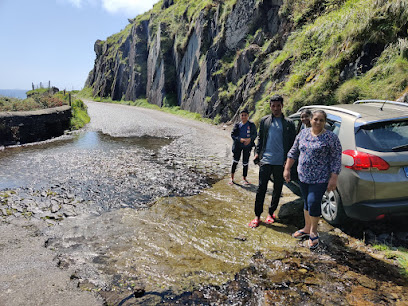
Essential places to dine
The Fish Box / Flannery's Seafood Bar
Discover Dingle's finest seafood at The Fish Box – where fresh catches meet local charm.
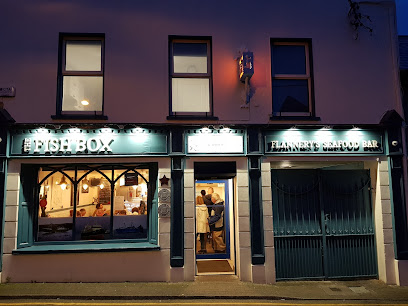
Out of the Blue
Experience exceptional seafood dining at Out of the Blue in Dingle, where every dish celebrates local flavors and sustainable practices.

Paul Geaney's Bar & Restaurant
Experience authentic Irish cuisine at Paul Geaney's Bar & Restaurant in Dingle – where local flavors meet warm hospitality.
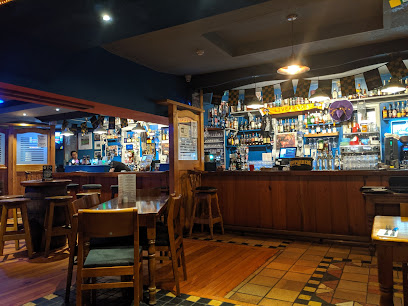
The Boatyard Restaurant
Experience the finest seafood dining at The Boatyard Restaurant in Dingle – where fresh flavors meet breathtaking coastal views.
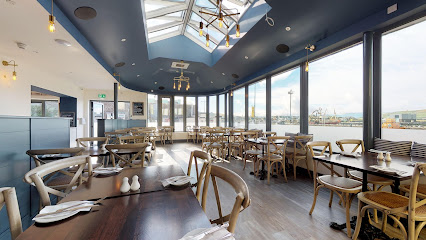
James Long Gastro Pub
Savor the flavors of Ireland at James Long Gastro Pub in Dingle - where local ingredients meet warm hospitality.
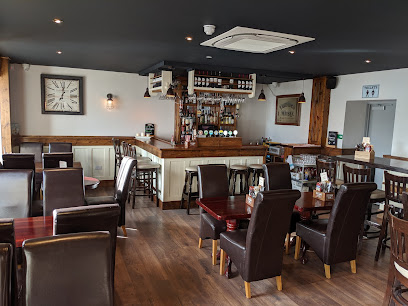
Marina Inn
Discover Marina Inn: A Cozy Irish Pub in Dingle Offering Traditional Cuisine & Warm Hospitality.
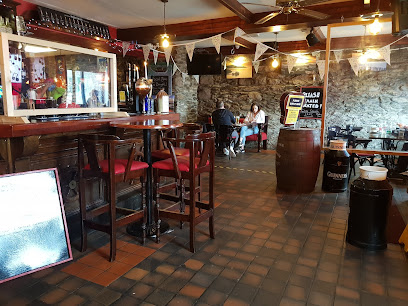
The Dingle Diner
Experience authentic Irish cuisine at The Dingle Diner – where tradition meets modern comfort food in beautiful County Kerry.
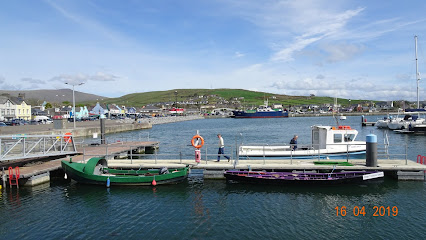
Danno's Restaurant & Bar
Discover delightful grilled dishes at Danno's Restaurant & Bar in Dingle – where local flavors meet warm Irish hospitality.
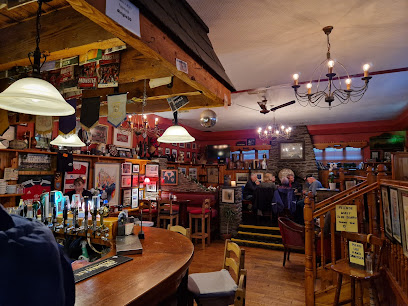
Harrington's Restaurant
Experience authentic Irish cuisine at Harrington's Restaurant in Dingle – where local flavors meet warm hospitality.

Doyle's Seafood Restaurant Dingle Ireland
Experience exquisite seafood dining at Doyle's Seafood Restaurant in Dingle, where fresh flavors meet stunning coastal views.
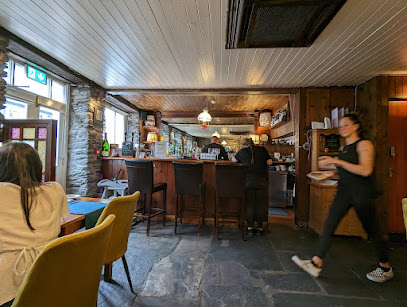
Reel Dingle Fish
Experience the best fish and chips in Ireland at Reel Dingle Fish - a beloved takeaway spot in scenic Dingle.

Ashes Restaurant & Bar
Experience authentic Irish cuisine at Ashes Restaurant & Bar in Dingle – where local flavors meet exceptional hospitality.
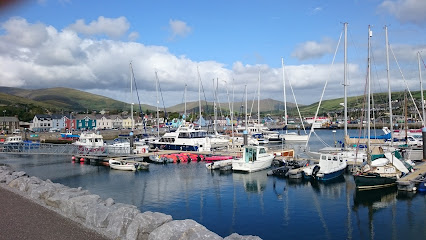
Solas Tapas & Wine
Experience the culinary delights of Dingle at Solas Tapas & Wine, where every dish is a celebration of local flavors.
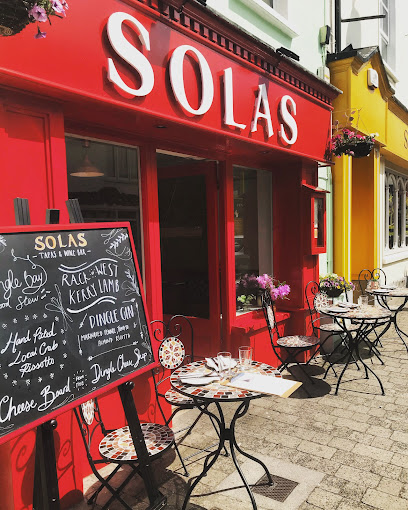
Fenton's of Dingle
Savor modern European cuisine in Dingle with fresh local ingredients at Fenton's – where every meal is a celebration.
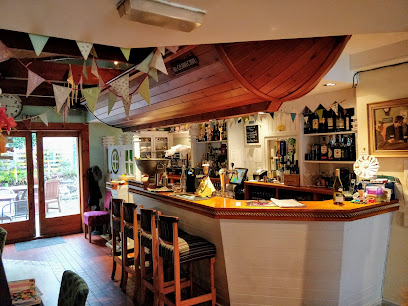
Lord Baker's Restaurant & Bar
Discover Lord Baker's Restaurant & Bar: A top seafood destination in Dingle offering fresh local flavors and a cozy gastropub atmosphere.
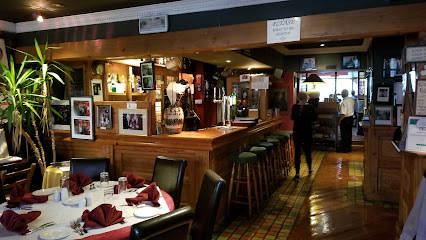
Markets, malls and hidden boutiques
Garvey's SuperValu Dingle
Explore the flavors of Dingle at Garvey's SuperValu, where local produce meets friendly service in a charming supermarket setting.
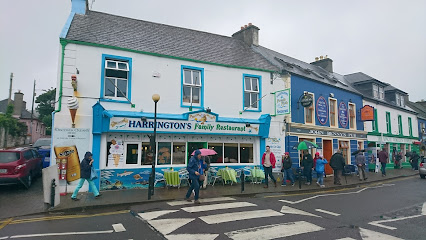
Lidl
Explore Lidl in Dingle for fresh produce, local delicacies, and unbeatable prices in the heart of Co. Kerry.

Strand House Dingle
Discover unique fashion and local charm at Strand House Dingle, where shopping meets the beauty of Ireland's breathtaking coastline.
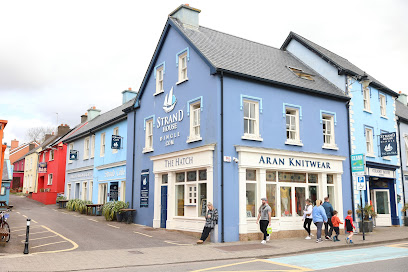
Holden Leathergoods
Discover exquisite leather craftsmanship at Holden Leathergoods in Dingle, where tradition meets contemporary design in the heart of County Kerry.
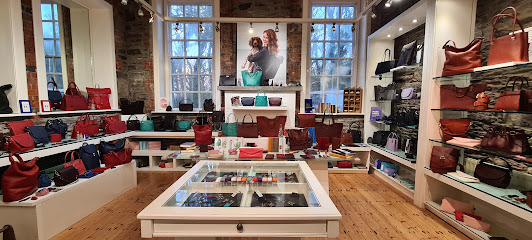
UNIQUE IRELAND PHONE & GIFT SHOP
Explore Unique Ireland Phone & Gift Shop in Dingle for the best mobile accessories and charming local gifts that embody the spirit of Ireland.
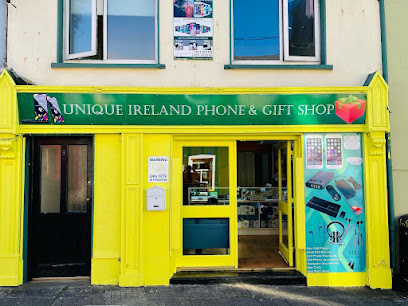
Sheehy's Spar
Discover local flavors at Sheehy's Spar, your go-to supermarket in Dingle for fresh produce, deli delights, and Irish specialties.
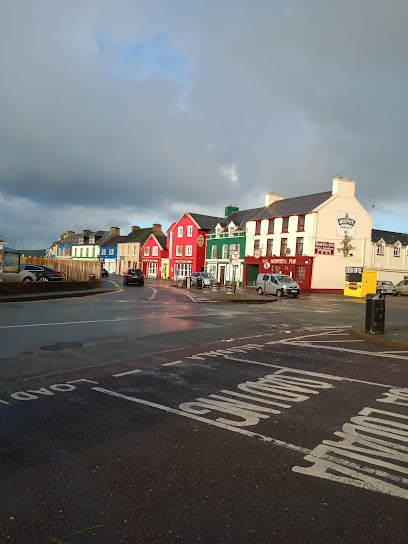
Morans Supermarket
Discover the best local produce and grocery essentials at Morans Supermarket in Dingle, the perfect shopping destination for tourists.
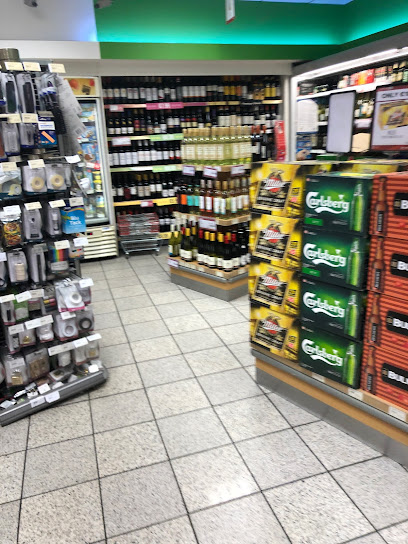
Dingle Candle Production Barn
Discover the enchanting world of candle making at Dingle Candle Production Barn, where creativity meets the charm of Dingle's scenic beauty.
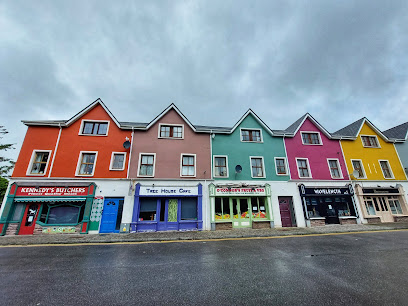
The Dingle Woollen Company - Gift/Knitwear Shop
Explore the authentic charm of The Dingle Woollen Company, your go-to destination for unique Irish gifts and exquisite knitwear in beautiful Dingle.
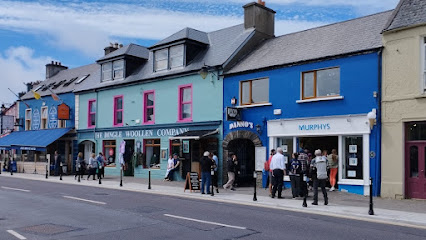
Kathleen McAuliffe
Explore Kathleen McAuliffe in Dingle for unique, handcrafted fashion accessories that celebrate Irish craftsmanship and style.
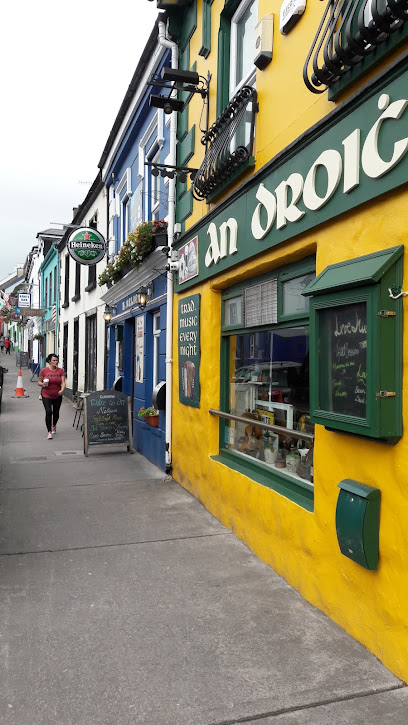
Centra Dingle
Explore Dingle with ease at Centra Dingle - your one-stop shop for fresh produce, local treats, and snacks along the picturesque Dingle Peninsula.
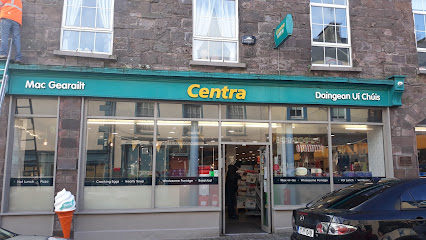
Dingle Record Shop
Explore Dingle's vibrant music scene at Dingle Record Shop, your go-to destination for vinyl and local tunes in the heart of Co. Kerry.
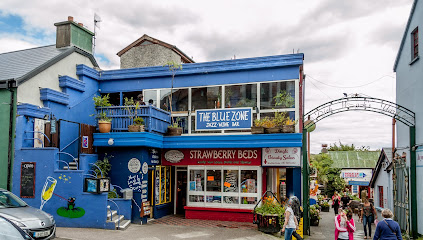
Garveys Sport & Leisure
Explore Dingle's breathtaking landscapes with top-notch outdoor gear from Garveys Sport & Leisure, your go-to shop for adventure in Co. Kerry.
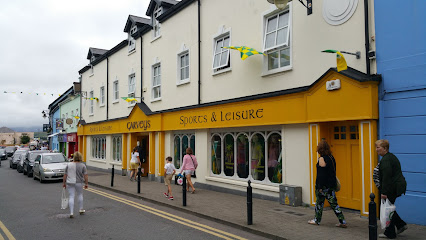
Kerry Woollen Mills
Discover the rich heritage of Irish wool craftsmanship at Kerry Woollen Mills, where quality meets tradition in the heart of County Kerry.
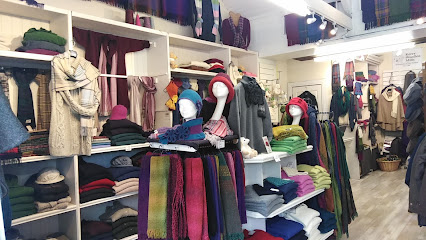
The Dolphin Shop
Discover unique souvenirs and local art at The Dolphin Shop, a charming store in Dingle, Co. Kerry, offering a taste of Ireland's maritime heritage.
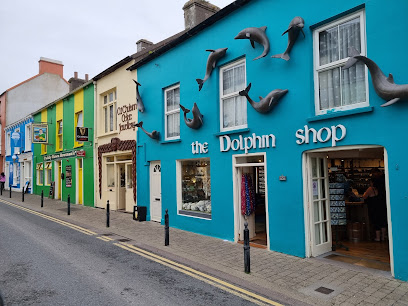
Essential bars & hidden hideouts
Dick Mack's Pub
Discover the historic Dick Mack's Pub in Dingle, where traditional Irish hospitality meets a vibrant atmosphere and delightful local brews.
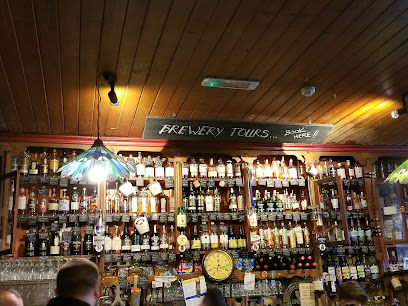
The Dingle Pub
Discover the vibrant atmosphere, local brews, and live music at The Dingle Pub, the heart of Irish culture in Dingle, Co. Kerry.
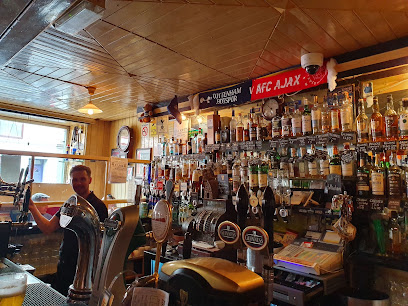
Foxy John's
Experience the heart of Dingle at Foxy John's, a vibrant pub known for its unique decor, delicious food, and lively atmosphere.
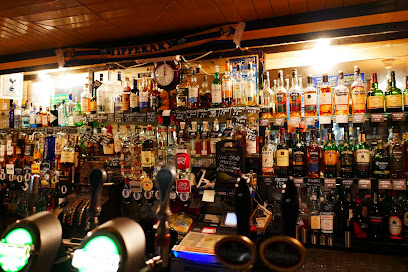
John Benny's Pub
Discover the spirit of Ireland at John Benny's Pub in Dingle, where live music and delicious cuisine create unforgettable moments.
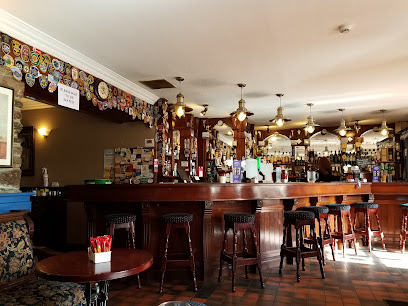
Paul Geaney's Bar & Restaurant
Discover the heart of Dingle at Paul Geaney's Bar & Restaurant, where exceptional Irish cuisine meets a lively atmosphere.
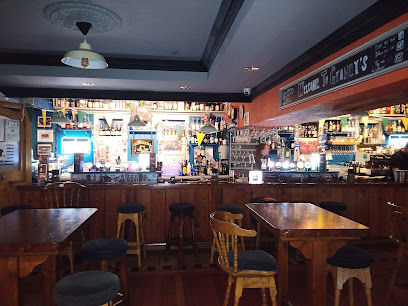
James Long Gastro Pub
Discover the taste of Ireland at James Long Gastro Pub, where traditional flavors meet modern grill cuisine in the heart of Dingle.
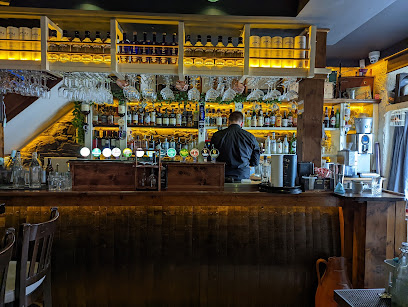
Marina Inn
Discover the authentic taste of Ireland at Marina Inn in Dingle, where traditional cuisine meets breathtaking coastal views.
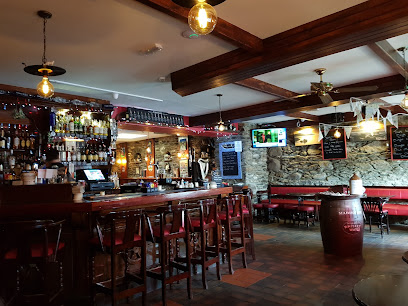
Danno's Restaurant & Bar
Experience the taste of Dingle at Danno's Restaurant & Bar, where local flavors meet a warm, inviting atmosphere.
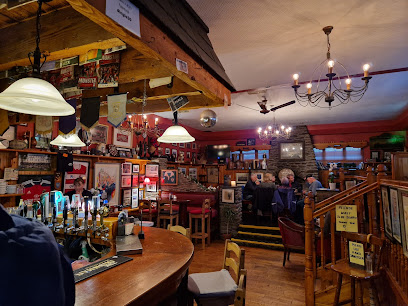
An Droichead Beag
Discover the heart of Dingle at An Droichead Beag, where traditional Irish hospitality meets delicious cuisine and vibrant entertainment.
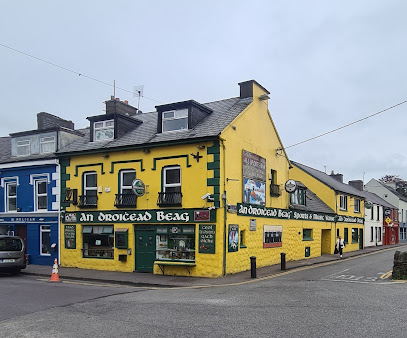
O'Flaherty's Bar
Discover the vibrant atmosphere of O'Flaherty's Bar in Dingle, where local culture and warm hospitality await every visitor.
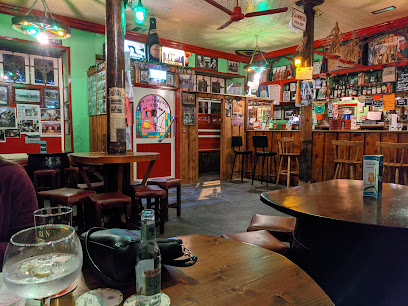
O'Sullivan's Courthouse Pub
Discover the charm of Dingle at O'Sullivan's Courthouse Pub, where authentic Irish food meets lively music in a cozy setting.
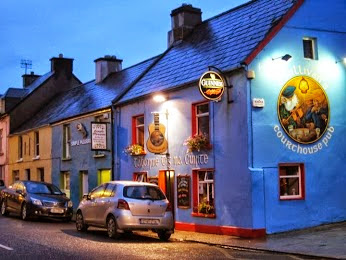
Paudie's Bar
Discover the heart and soul of Dingle at Paudie's Bar, where traditional Irish hospitality meets delicious local brews and music.

Curran's
Experience the heart of Dingle at Curran's, where traditional Irish hospitality meets vibrant community spirit and live music.
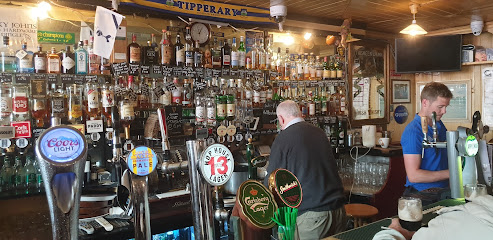
Neligan's Bar
Discover the heart of Dingle at Neligan's Bar, where great drinks, local flavors, and authentic Irish culture come together.
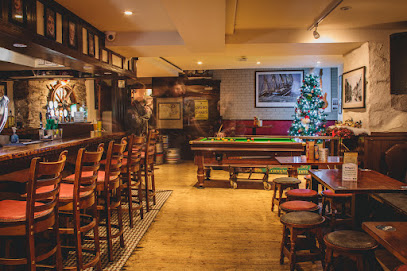
Bob Griffin’s Bar Dingle
Experience the heart of Dingle at Bob Griffin’s Bar, where local charm meets an inviting atmosphere in this beloved Irish pub.
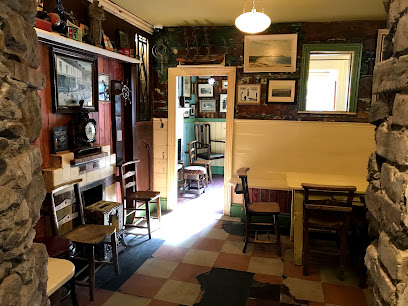
Local Phrases about Dingle Peninsula
-
- HelloDia duit
[Dee-ah gwit] - GoodbyeSlán
[Slawn] - YesTá
[Taw] - NoNíl
[Neel] - Please/You're welcomeLe do thoil
[Leh duh hull] - Thank youGo raibh maith agat
[Guh rev mah agut] - Excuse me/SorryMaith thú
[Mah hoo] - How are you?Conas atá tú?
[Kun-us ah-taw too] - Fine. And you?Tá mé go maith. Agus tú?
[Taw may guh mah. Ah-gus too] - Do you speak English?An labhraíonn tú Béarla?
[On low-reen too bayr-lah] - I don't understandNí thuigim
[Nee hig-im]
- HelloDia duit
-
- I'd like to see the menu, pleaseBa mhaith liom an billeog a fheiceáil, le do thoil
[Bah wah lum on bill-ohg ah eck-ah-il, leh duh hull] - I don't eat meatNí bhíonn feoil agam
[Nee vee-un foh-il ah-gum] - Cheers!Sláinte!
[Slawn-cheh] - I would like to pay, pleaseBa mhaith liom íoc, le do thoil
[Bah wah lum ee-uk, leh duh hull]
- I'd like to see the menu, pleaseBa mhaith liom an billeog a fheiceáil, le do thoil
-
- Help!Cabhair!
[Kow-er] - Go away!Imigh uaim!
[Im-ee oom] - Call the Police!Glan an Garda!
[Glan on Gar-dah] - Call a doctor!Glan an dochtúir!
[Glan on duck-too-er] - I'm lostTáim caillte
[Taw-im kahl-cheh] - I'm illTáim tinn
[Taw-im chin]
- Help!Cabhair!
-
- I'd like to buy...Ba mhaith liom ceannach...
[Bah wah lum kyen-ukh] - I'm just lookingNíl ach ag faire
[Neel akh eg fah-reh] - How much is it?Cé mhéad atá air?
[Kay vade ah-taw air] - That's too expensiveTá sé sin ró-dhaor
[Taw shay shin roe-gweer] - Can you lower the price?An féidir leat an praghas a laghdú?
[On fay-dur lat on prah-gus ah lay-goo]
- I'd like to buy...Ba mhaith liom ceannach...
-
- What time is it?Cén t-am é?
[Kayn tahm ay] - It's one o'clockTá sé a haon
[Taw shay ah hayn] - Half past (10)Leathuair tar éis a deich
[Lah-hoo-er tar aysh ah deh] - MorningMaidin
[Mah-din] - AfternoonTráthnóna
[Tray-noh-nah] - EveningTráthnóna
[Tray-noh-nah] - YesterdayInné
[In-ay] - TodayInniu
[In-yoo] - TomorrowAmárach
[Ah-maw-rakh] - 1Aon
[Ay-n] - 2Dó
[Doh] - 3Trí
[Tree] - 4Ceathair
[Cah-her] - 5Cúig
[Koo-ig] - 6Sé
[Shay] - 7Seacht
[Shakht] - 8Ocht
[Ukht] - 9Naoi
[Nee] - 10Deich
[Deh]
- What time is it?Cén t-am é?
-
- Where's a/the...?Cá bhfuil a/an...?
[Kaw will ah/ahn] - What's the address?Céard atá ar an seoladh?
[Kay-ard ah-taw er on show-lah] - Can you show me (on the map)?An féidir leat íomhá a thaispeáint (ar an léarscáil)?
[On fay-dur lat eev-ah ah hash-paint (er on leh-er-skawl)] - When's the next (bus)?Cathain a bheidh an chéad (bus)?
[Kah-heen ah vay on khayd (bus)] - A ticket (to ....)Ticéad (go dtí ....)
[Tik-ayd (guh dee)]
- Where's a/the...?Cá bhfuil a/an...?
History of Dingle Peninsula
-
The Dingle Peninsula is dotted with ancient stone structures dating back to the Neolithic period, around 4000-2500 BCE. These include various standing stones, ring forts, and burial sites. The Gallarus Oratory, a dry-stone church built between the 6th and 9th centuries, stands as a testament to early Christian architecture and remains an iconic symbol of the peninsula.
-
Christianity took root in the Dingle Peninsula around the 5th century CE. Monastic settlements like Riasc and Kilmalkedar were established, serving as religious and educational centers. The area became a hub for scholars and monks, contributing significantly to Ireland's reputation as the 'land of saints and scholars.'
-
In the 9th and 10th centuries, Viking raiders frequently attacked the Dingle Peninsula. These Norsemen left behind evidence of their presence in the form of artifacts and place names. Despite the turmoil, the local population adapted and integrated some aspects of Viking culture.
-
The arrival of the Normans in the late 12th century brought significant changes to the region. They constructed stone castles and fortified towns, including the establishment of Dingle as a walled town in the 13th century. The Normans also introduced new agricultural practices and trade relations, laying the groundwork for economic growth.
-
During the medieval period, Dingle became a prominent trading port, particularly in the 15th and 16th centuries. It developed strong commercial ties with Spain and other European countries, exporting fish, wool, and hides. The town's wealth is reflected in its numerous stone buildings and churches from this era.
-
The 16th century saw Dingle caught up in the wider political and military conflicts of the Elizabethan conquest of Ireland. The Desmond Rebellions (1569-1583) were a series of uprisings by the FitzGerald dynasty against English rule. The peninsula witnessed battles and skirmishes, leading to significant destruction and upheaval.
-
Following the defeat of the Irish forces at the Battle of Kinsale in 1601, many Irish soldiers and nobles fled to continental Europe in what became known as the Flight of the Wild Geese. The Dingle Peninsula, with its strong maritime connections, served as one of the departure points for these exiles, contributing to the Irish diaspora.
-
The Great Famine of the mid-19th century had a devastating impact on the Dingle Peninsula. The potato blight led to widespread starvation and disease, forcing many inhabitants to emigrate. The population of the area dramatically decreased, and the scars of this period are still evident in the landscape and local memory.
-
The late 19th and early 20th centuries saw a resurgence of interest in Irish culture and language, partly as a reaction to British rule. The Dingle Peninsula became a stronghold for the Gaelic revival, with efforts to preserve and promote traditional music, dance, and the Irish language. Today, the area is part of the Gaeltacht, regions in Ireland where Irish is still spoken as a community language.
-
In the 20th century, the Dingle Peninsula transformed into a popular tourist destination, known for its stunning landscapes, rich history, and vibrant culture. Efforts have been made to preserve its natural beauty and historical sites, balancing tourism with conservation. The area continues to attract visitors from around the world, eager to experience its unique heritage.
Dingle Peninsula Essentials
-
Dingle Peninsula is located in County Kerry, Ireland. The closest airport is Kerry Airport (Farranfore), approximately 50 kilometers away. You can also fly into Shannon Airport, which is about 150 kilometers away, or Cork Airport, around 160 kilometers away. From these airports, you can rent a car or take a bus. Bus services such as Bus Éireann offer routes to Dingle from major cities like Dublin, Cork, and Limerick.
-
Dingle Peninsula is best explored by car, giving you the flexibility to visit remote areas and take in the stunning scenery at your own pace. Car rental services are available at the major airports and in Dingle town. Public transport options include local buses, but they are infrequent. Cycling is also a popular way to explore the peninsula, with bike rentals available in Dingle town. Taxis are available but can be costly for long distances.
-
The official currency in Ireland is the Euro (EUR). Credit and debit cards are widely accepted in hotels, restaurants, and shops throughout Dingle Peninsula. ATMs are available in Dingle town and other larger villages. It is advisable to carry some cash, especially if you plan to visit more remote areas where card payments may not be accepted.
-
Dingle Peninsula is generally a safe destination for tourists. Violent crime is rare, and most visits are trouble-free. However, like any tourist destination, it’s wise to take standard precautions. Avoid leaving valuables in your car, especially in remote areas or car parks. Be cautious when walking alone at night in unfamiliar areas. There are no specific high-crime areas targeting tourists, but always stay vigilant.
-
In case of emergency, dial 112 or 999 for police, fire, or medical assistance. The nearest hospital with an emergency department is in Tralee, about 50 kilometers from Dingle town. There are also medical clinics and pharmacies in Dingle town for minor health issues. It is recommended to have travel insurance that covers medical emergencies.
-
Fashion: Do wear comfortable clothes and shoes suitable for outdoor activities. Layering is advisable due to the variable weather. Avoid overly casual attire in upscale restaurants. Religion: Do respect local customs and traditions. While Ireland is predominantly Catholic, respect all places of worship. Public Transport: Do be courteous and give up your seat to elderly passengers. Don't expect public transport to be as frequent as in urban areas. Greetings: Do greet people with a friendly 'hello' or 'hi.' Handshakes are common in formal settings. Eating & Drinking: Do try local dishes like seafood chowder and lamb stew. Don’t forget to tip (about 10-15%) in restaurants if service is not included.
-
To experience Dingle Peninsula like a local, visit the Dingle Farmers' Market held every Friday, where you can buy fresh local produce and crafts. Engage with locals in traditional pubs like Dick Mack's and listen to live traditional Irish music. Don’t miss exploring the Slea Head Drive for breathtaking coastal views and historical sites like the Gallarus Oratory. For a unique experience, take a boat tour to see Fungie the Dolphin, a local celebrity.
Trending Landmarks in Dingle Peninsula
Nearby Cities to Dingle Peninsula
-
Things To Do in Tralee
-
Things To Do in Killarney
-
Things To Do in Ennis
-
Things To Do in Limerick
-
Things To Do in Cork
-
Things To Do in Kinsale
-
Things To Do in Salthill
-
Things To Do in Galway
-
Things To Do in Westport
-
Things To Do in Athlone
-
Things To Do in Kilkenny
-
Things To Do in Waterford
-
Things To Do in Wexford
-
Things To Do in Sligo
-
Things To Do in Dublin












